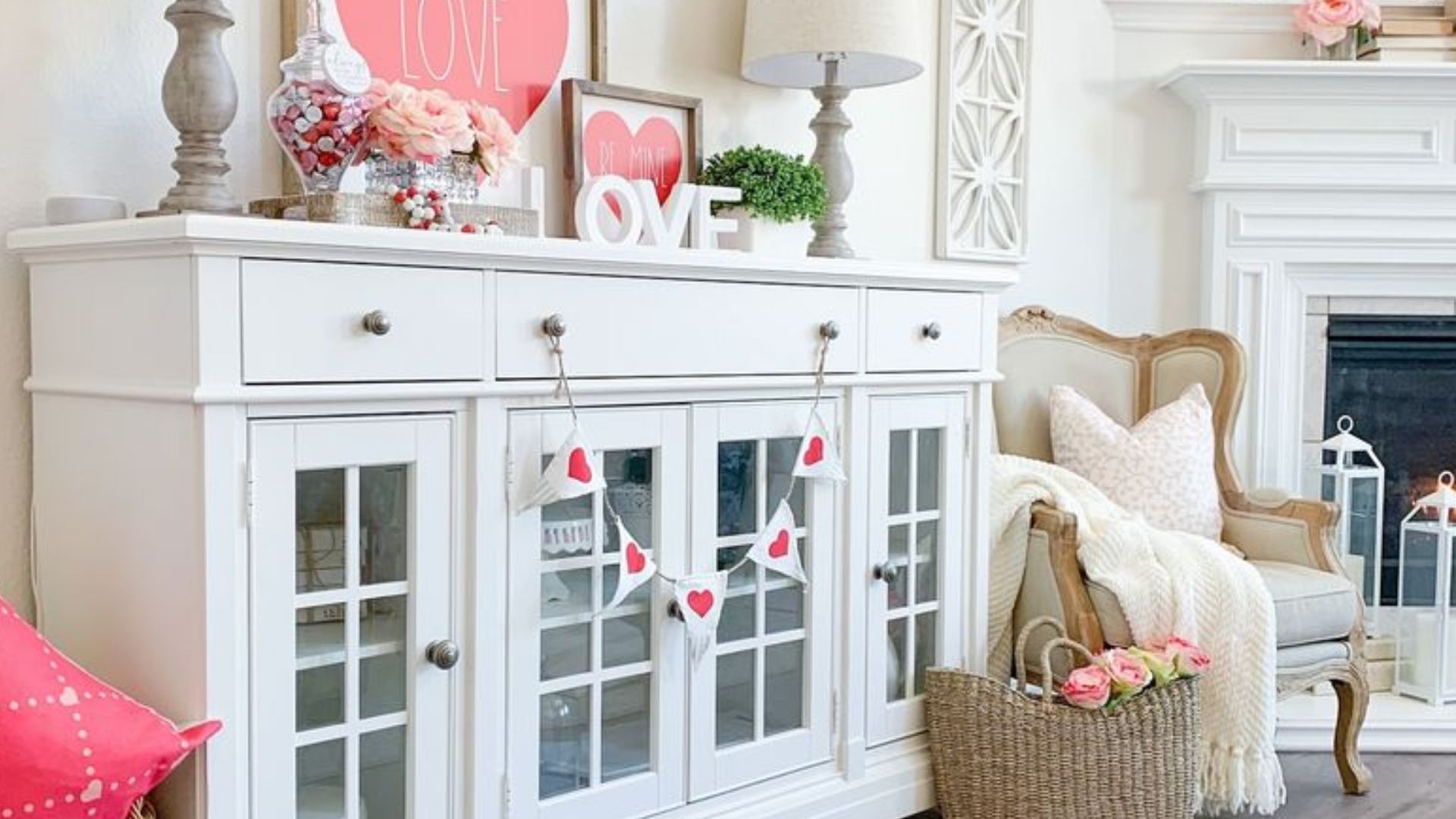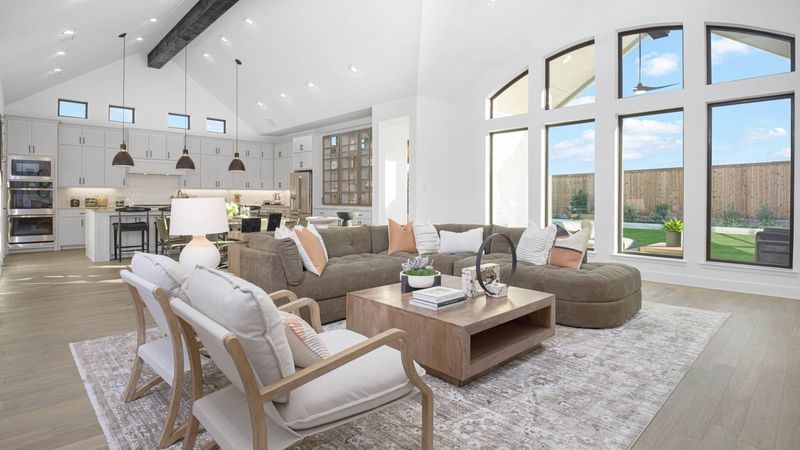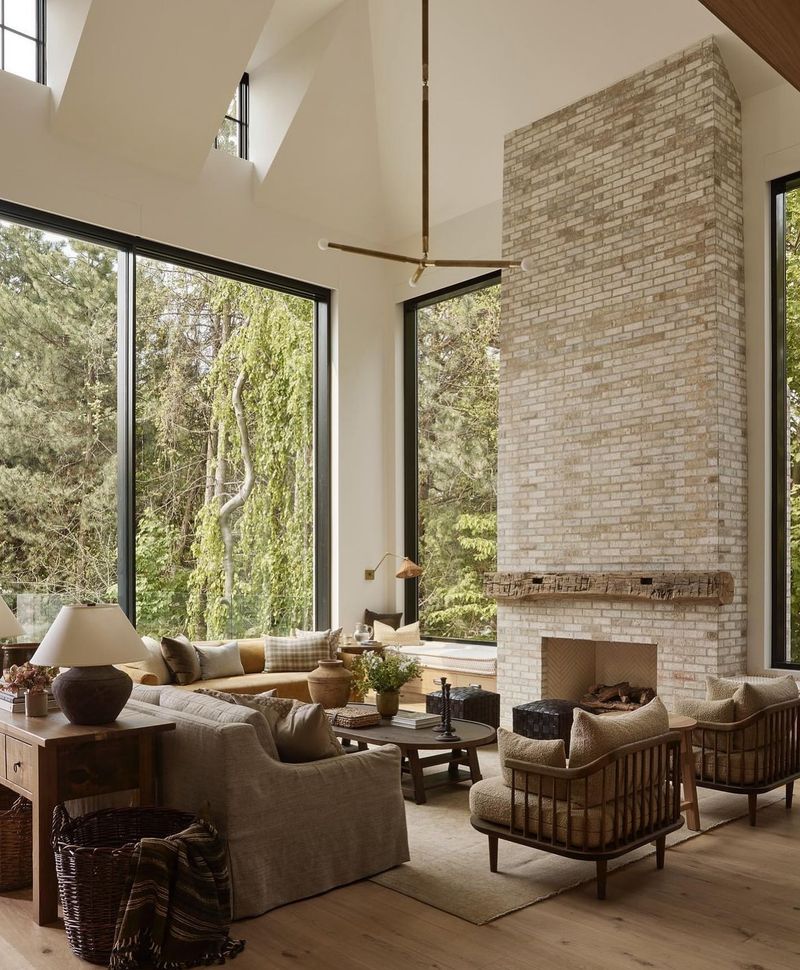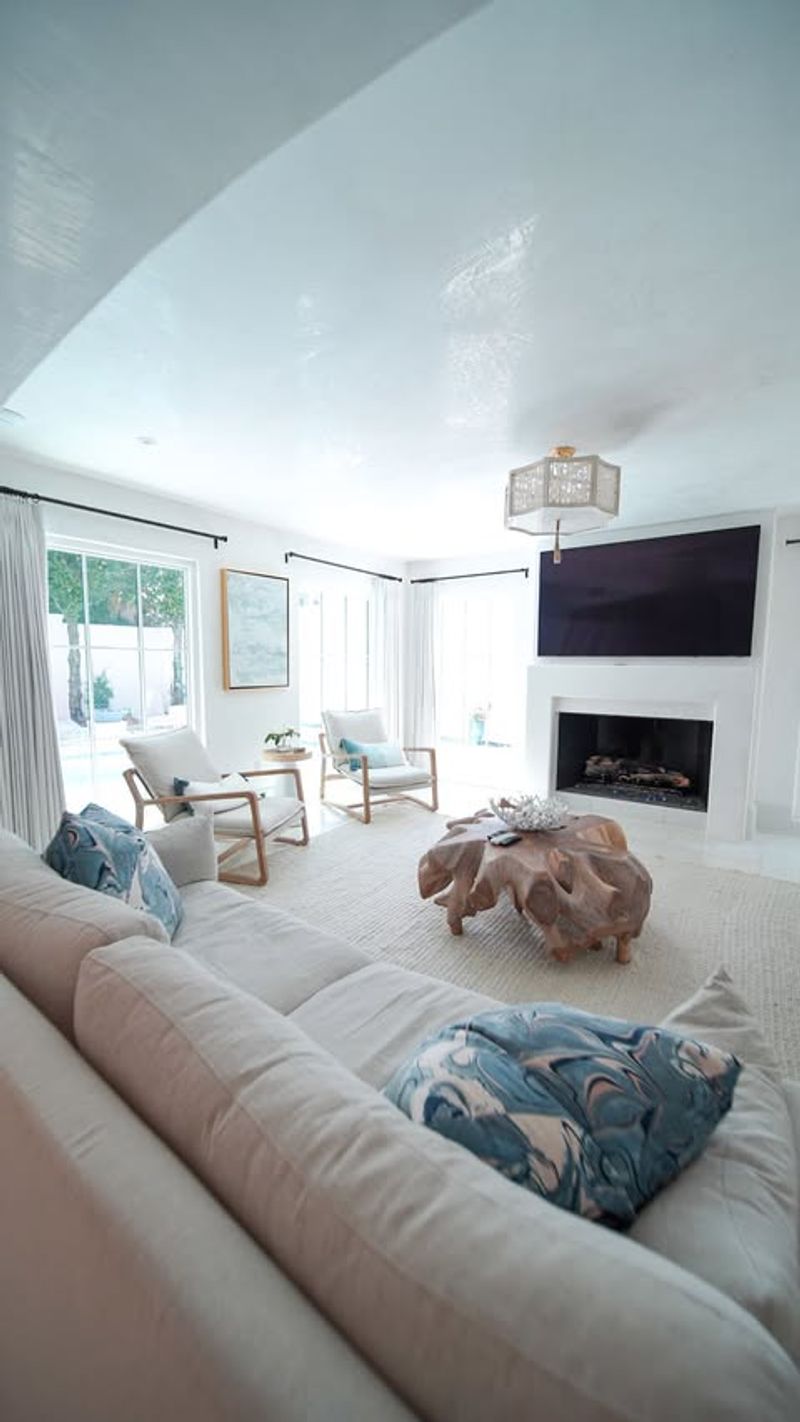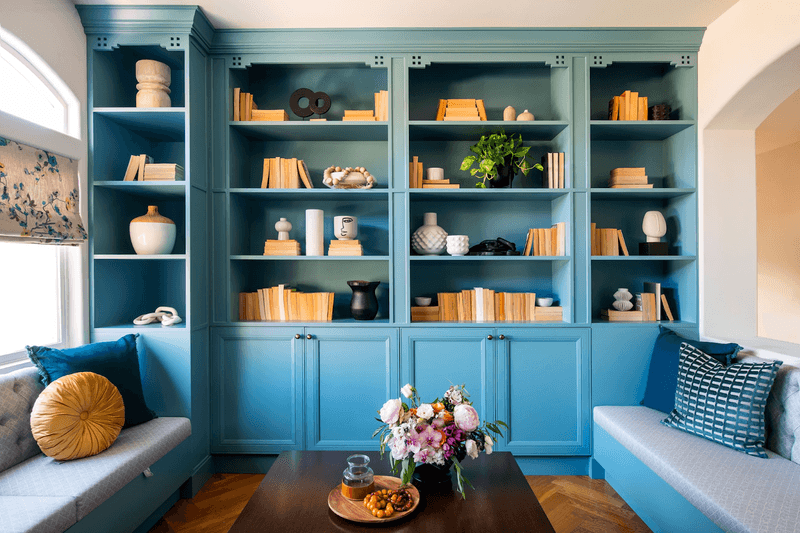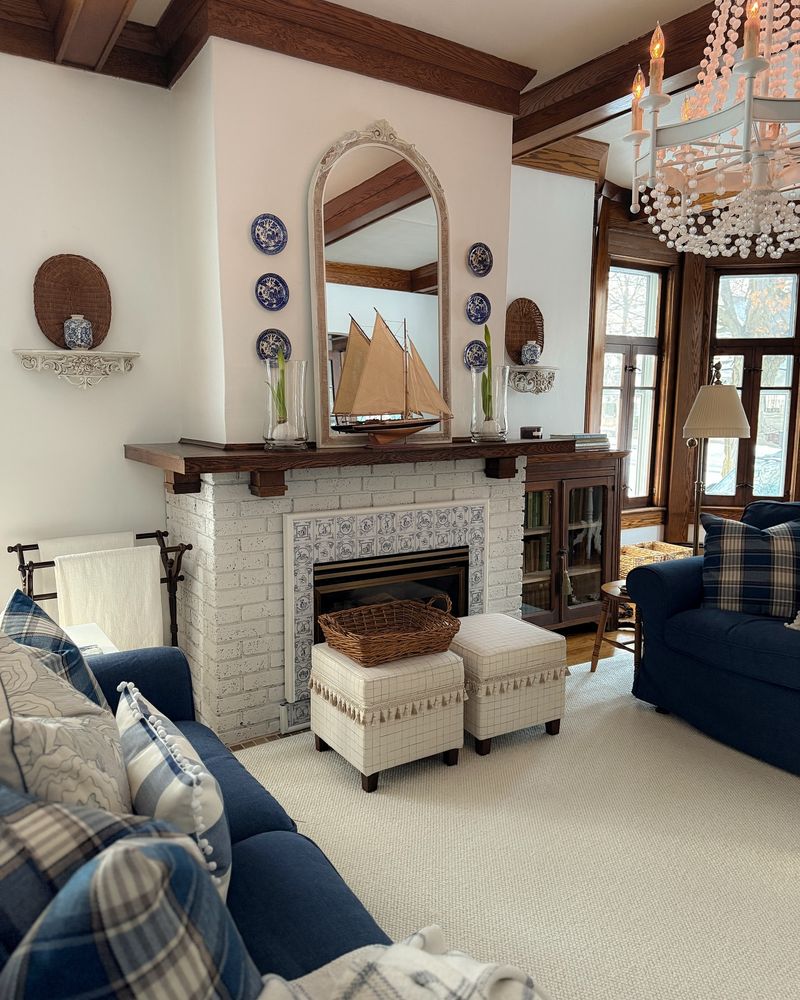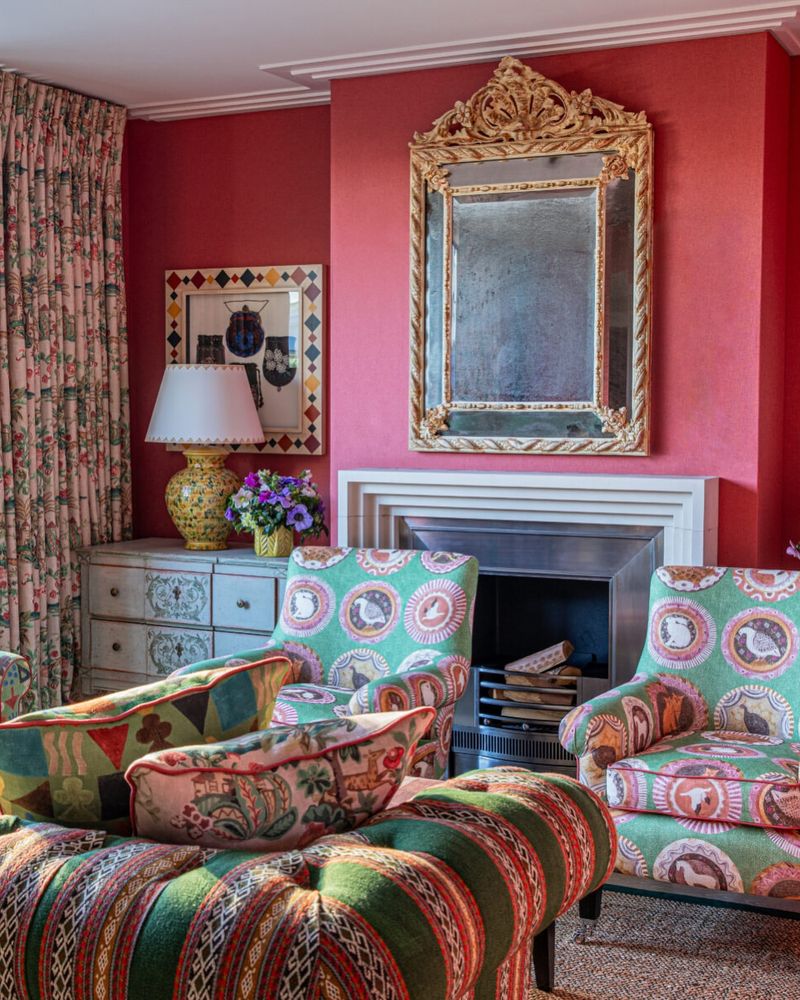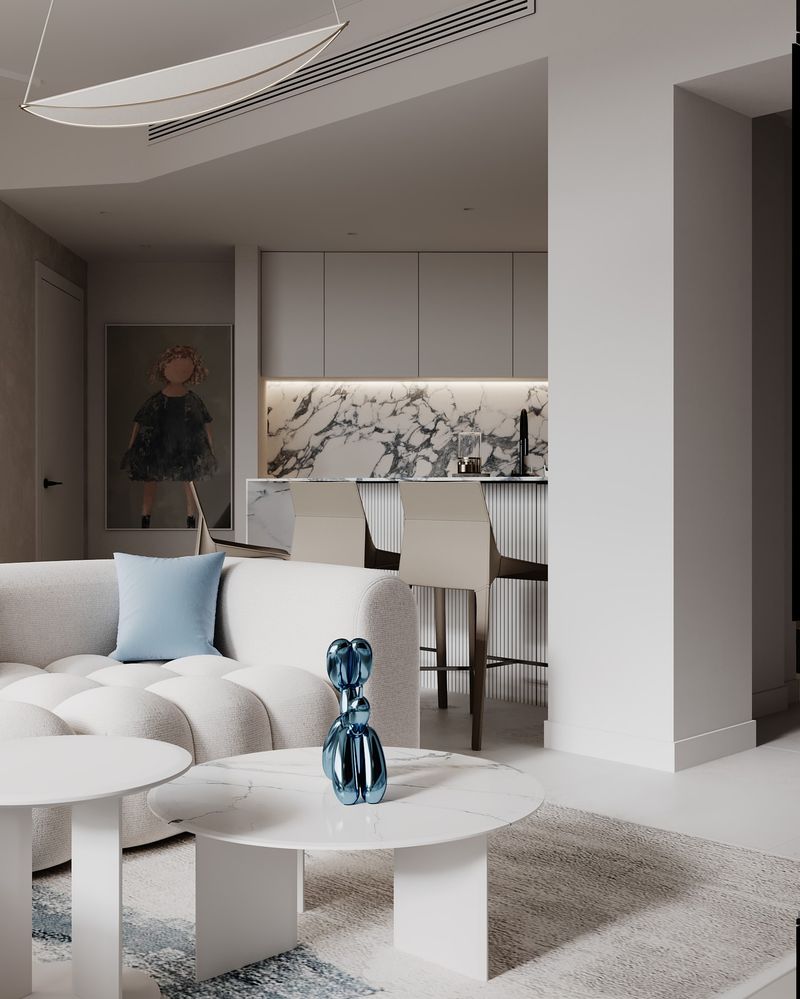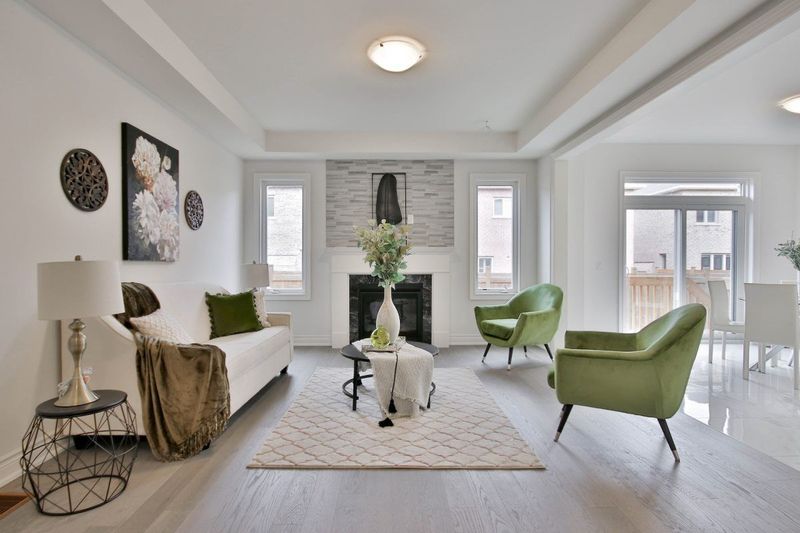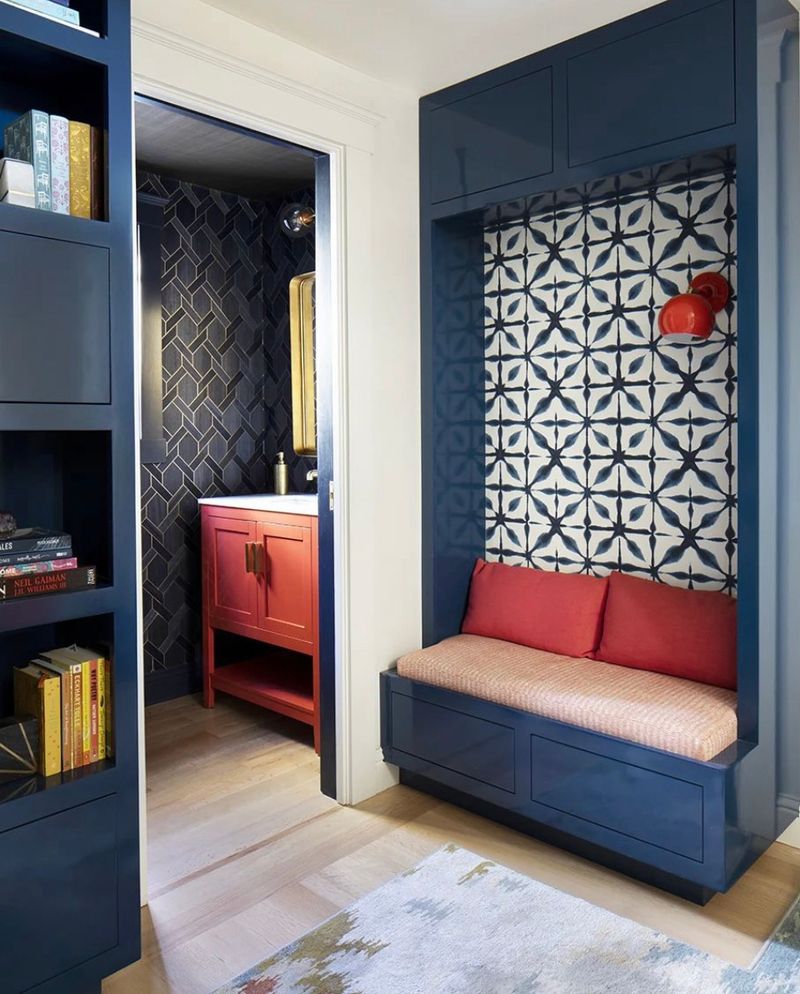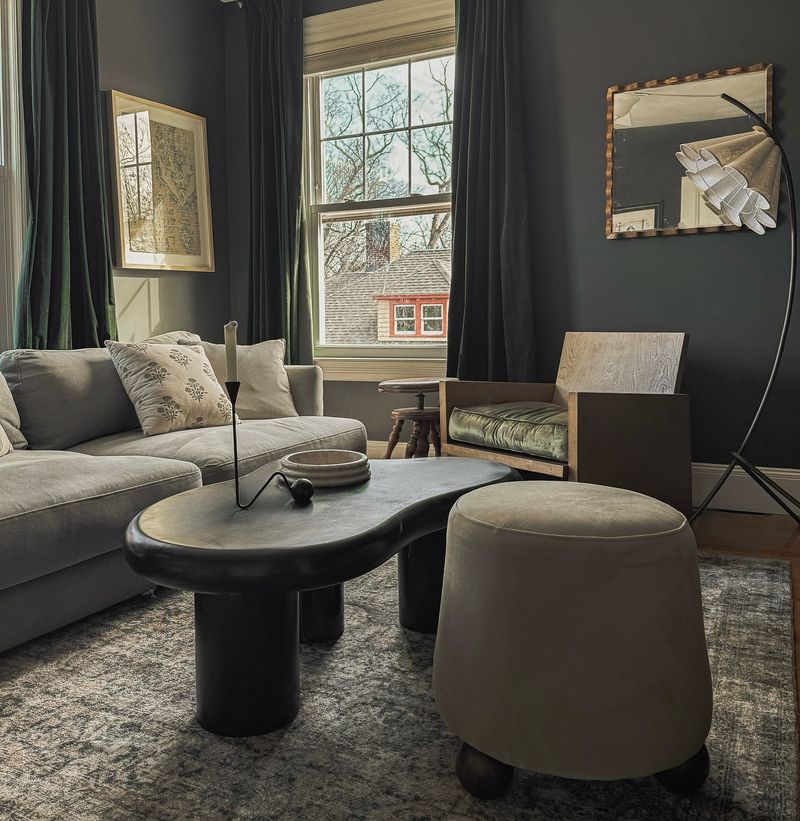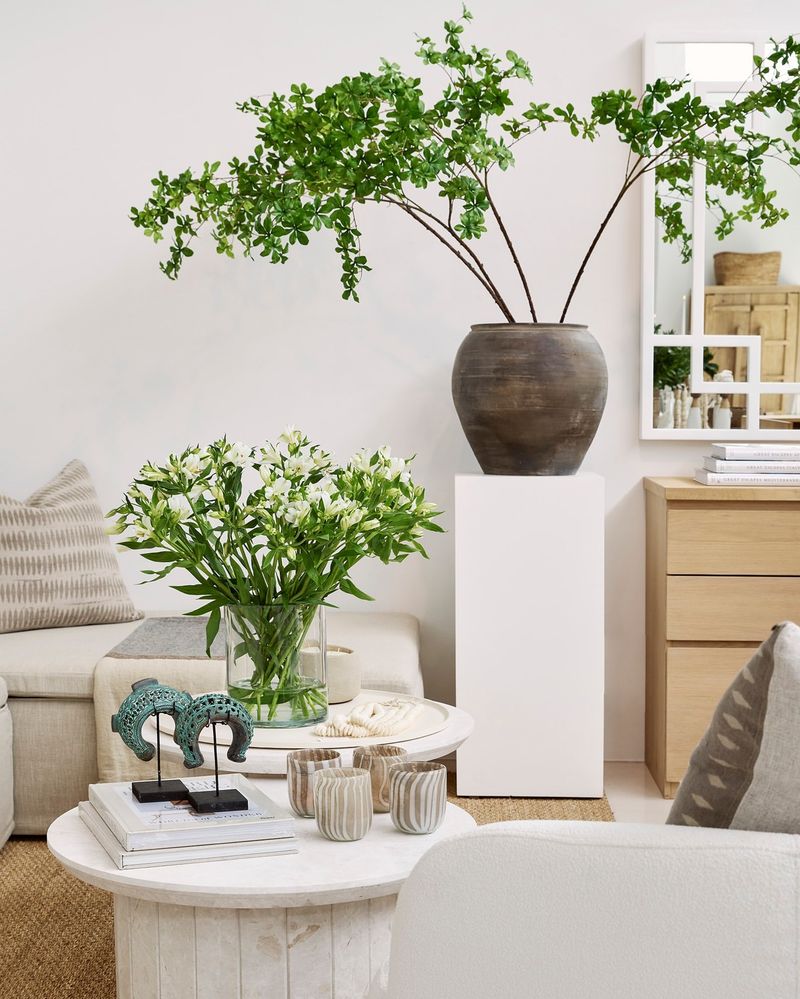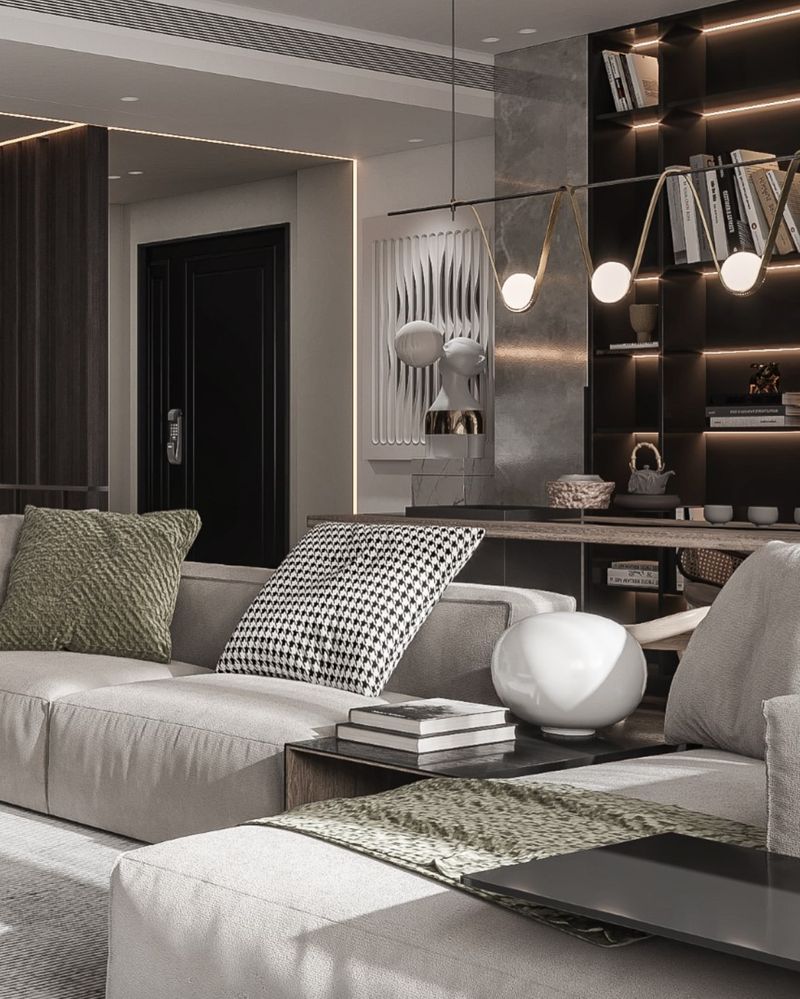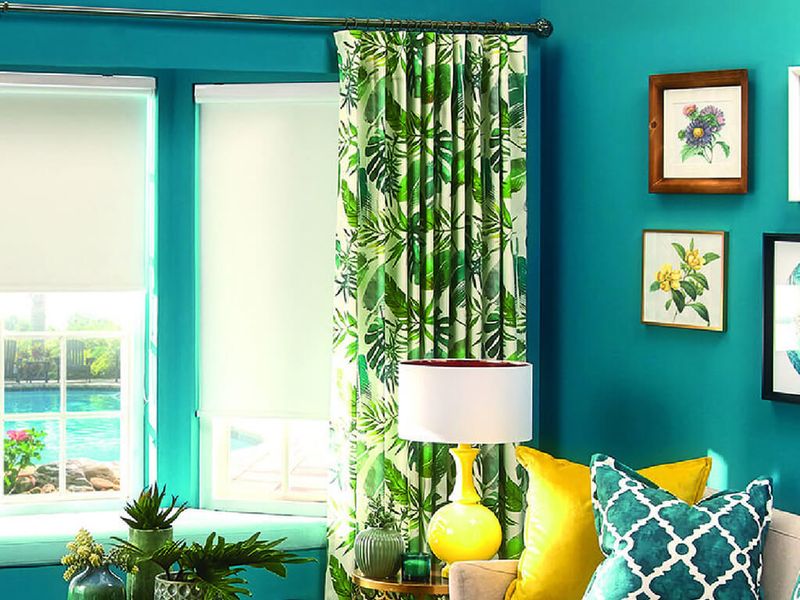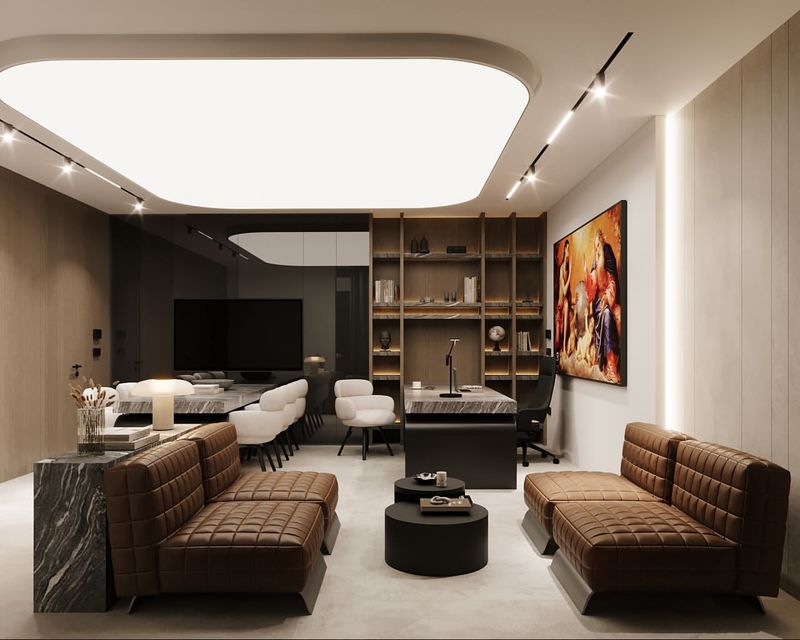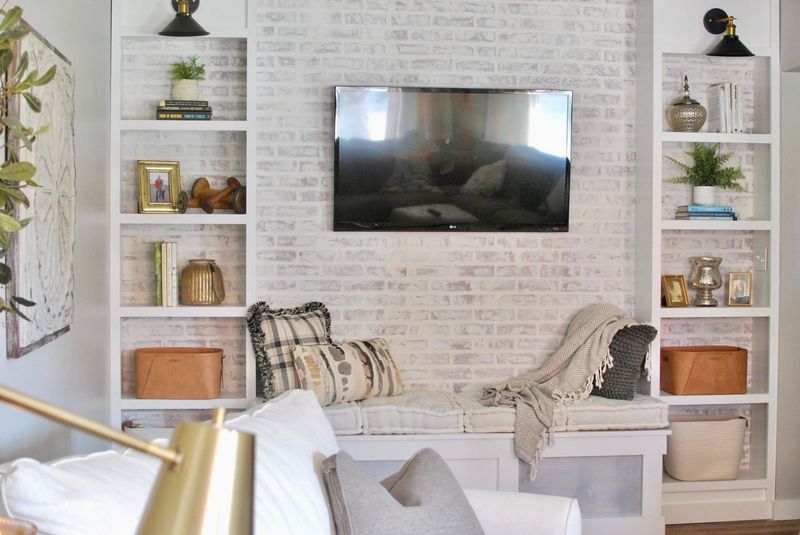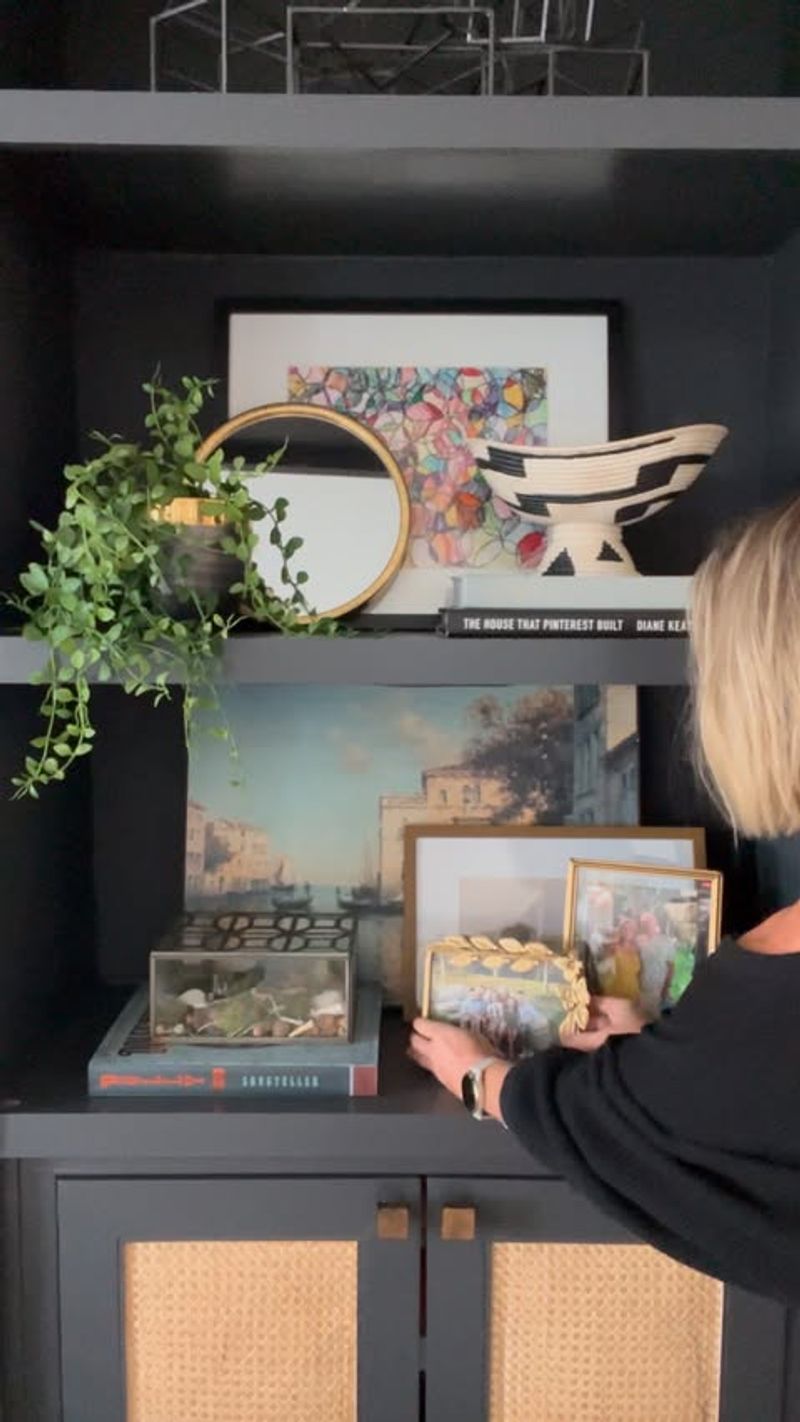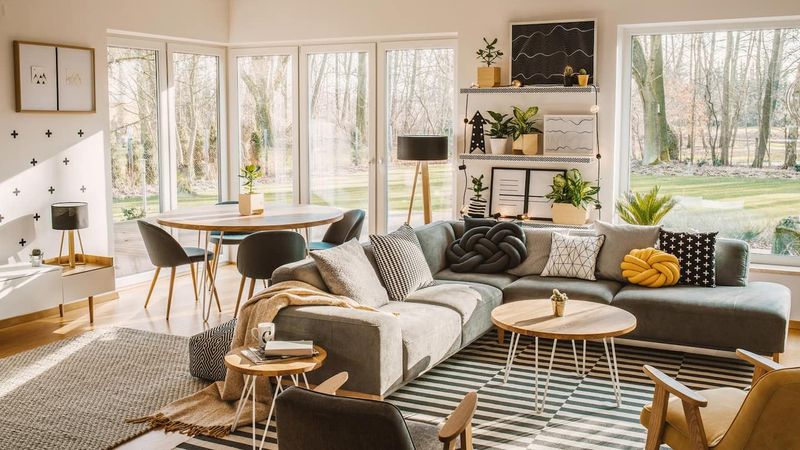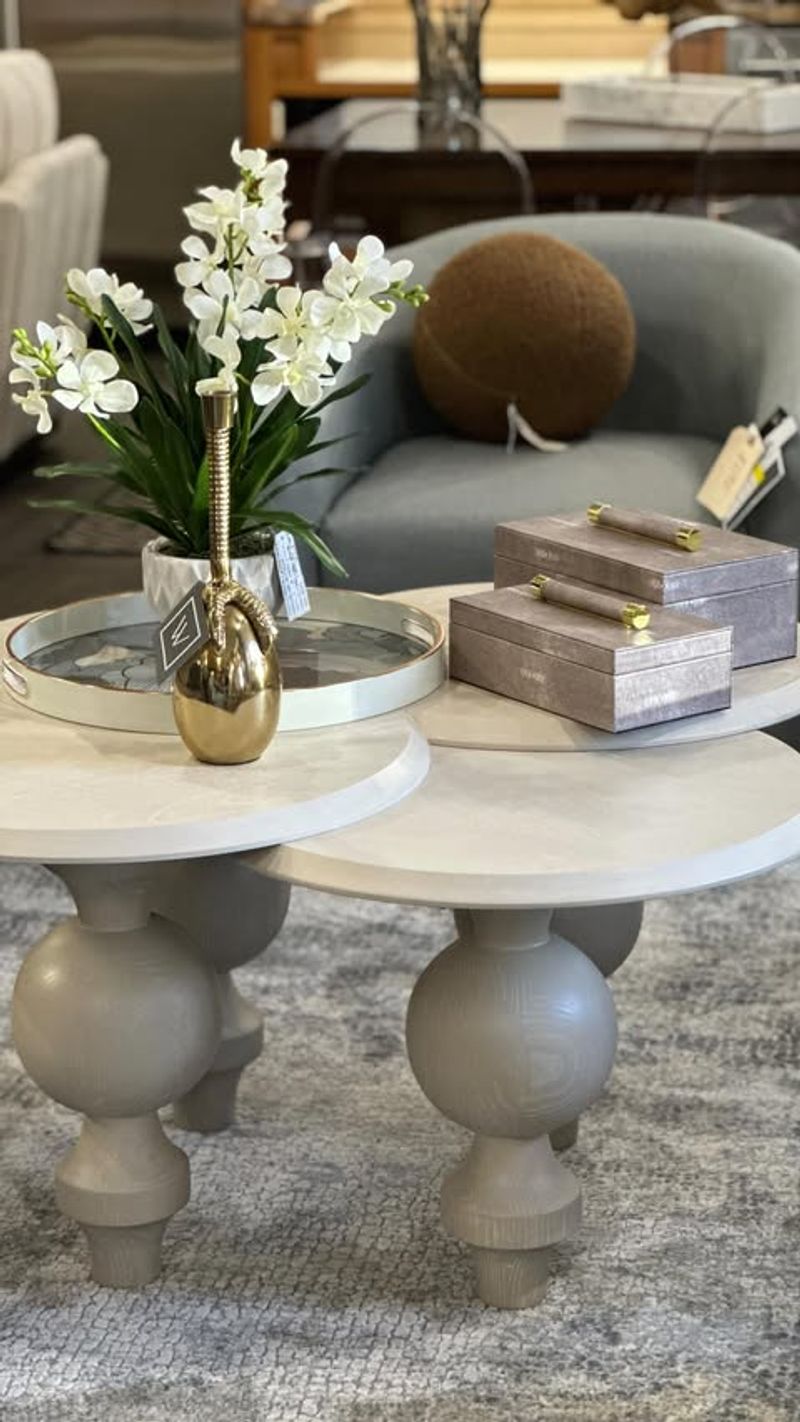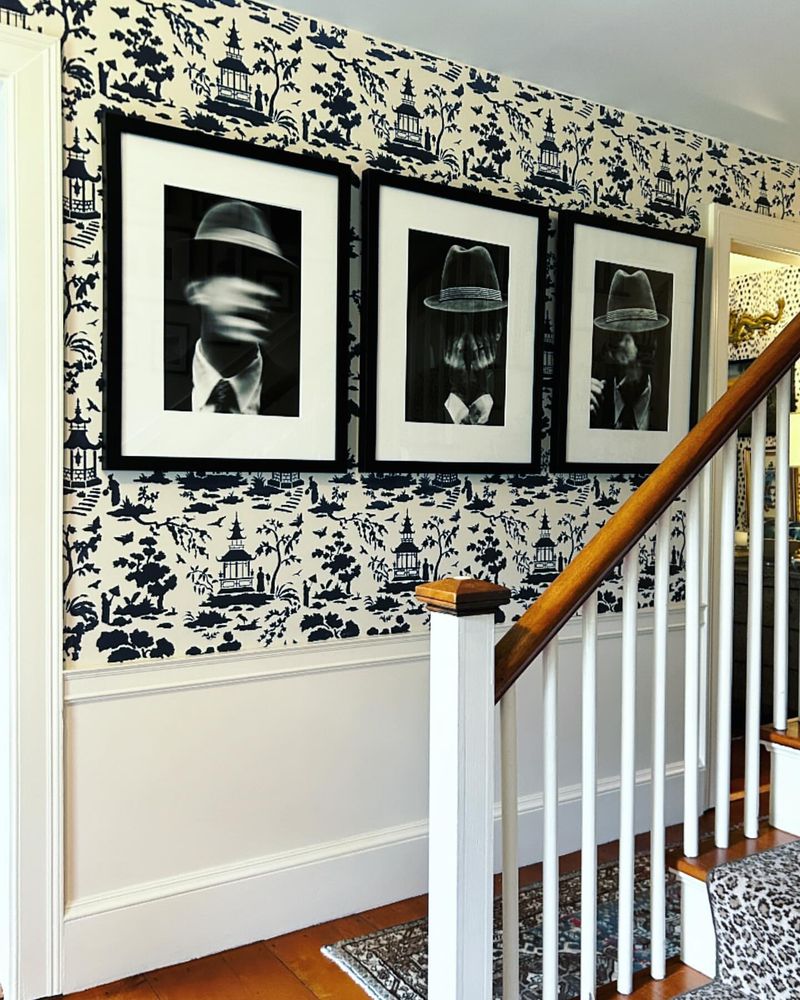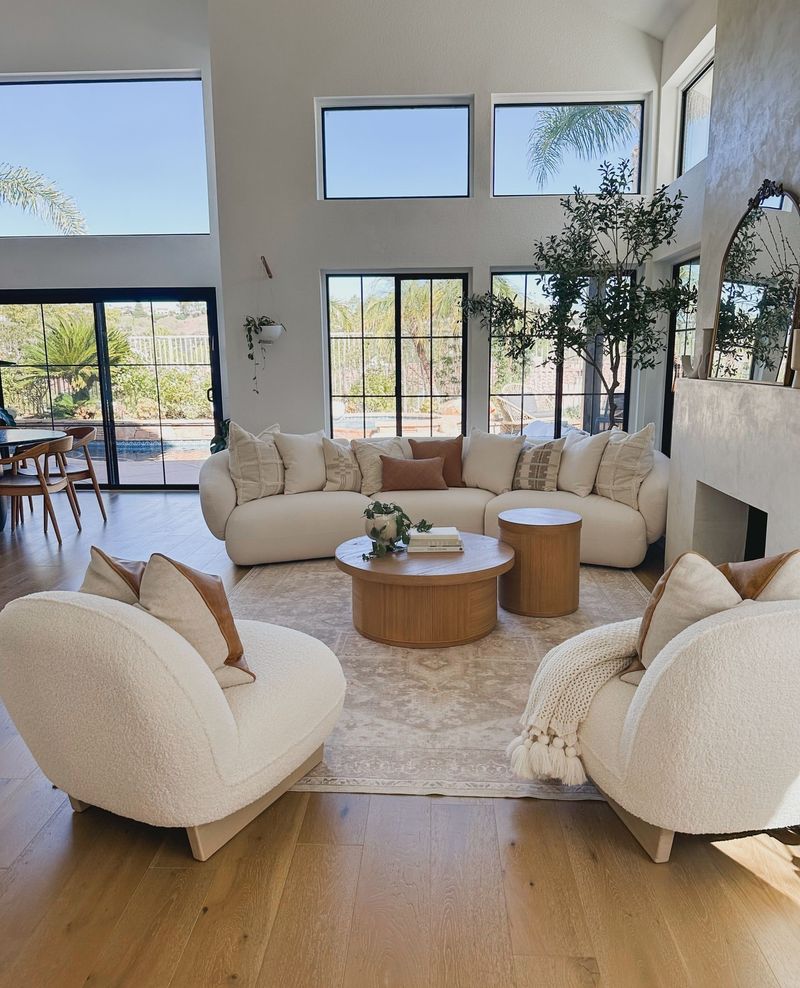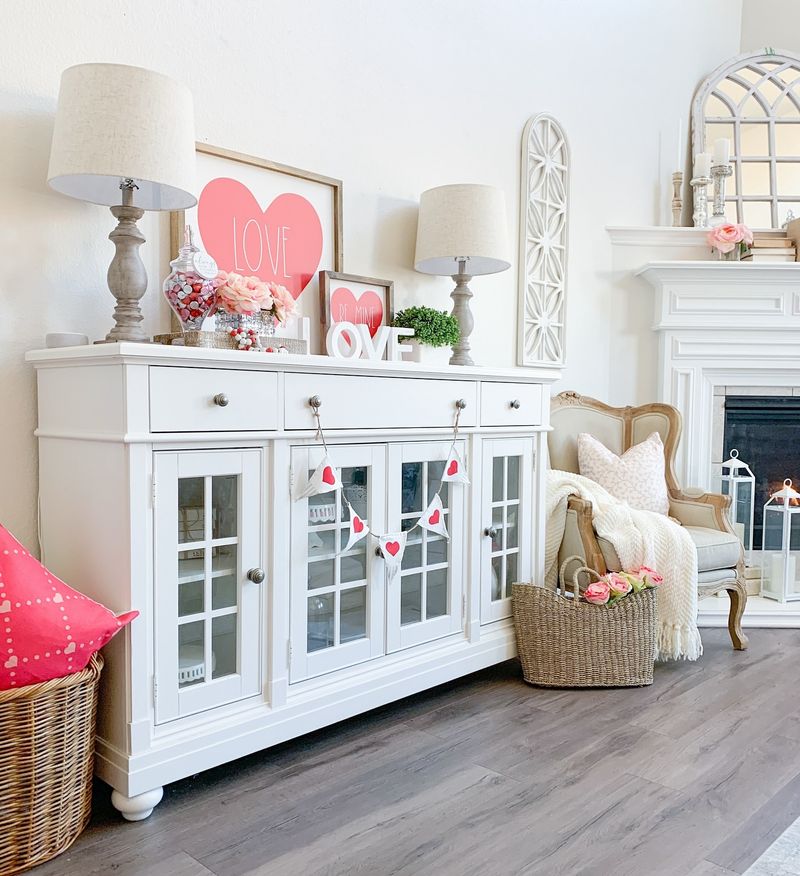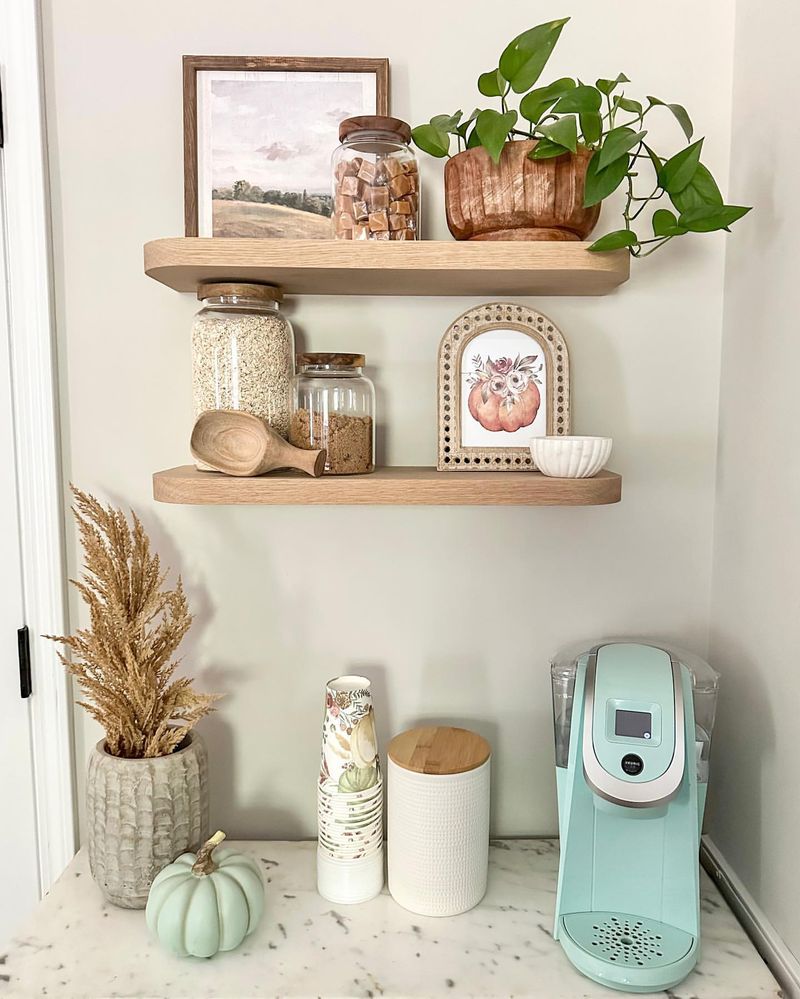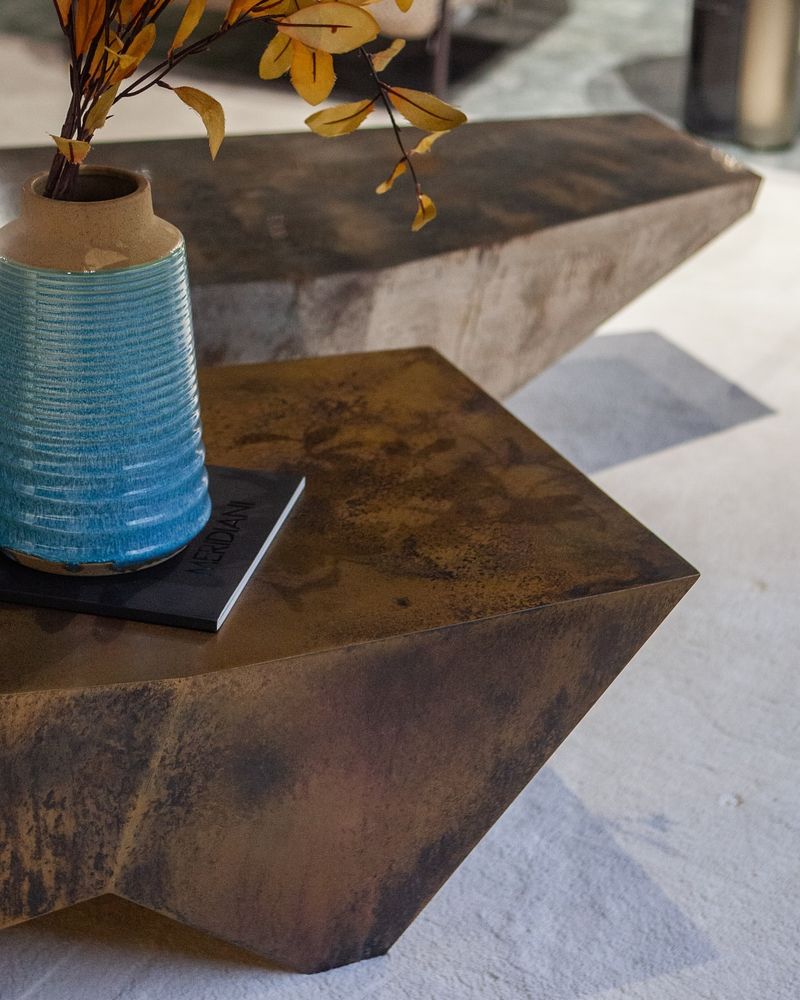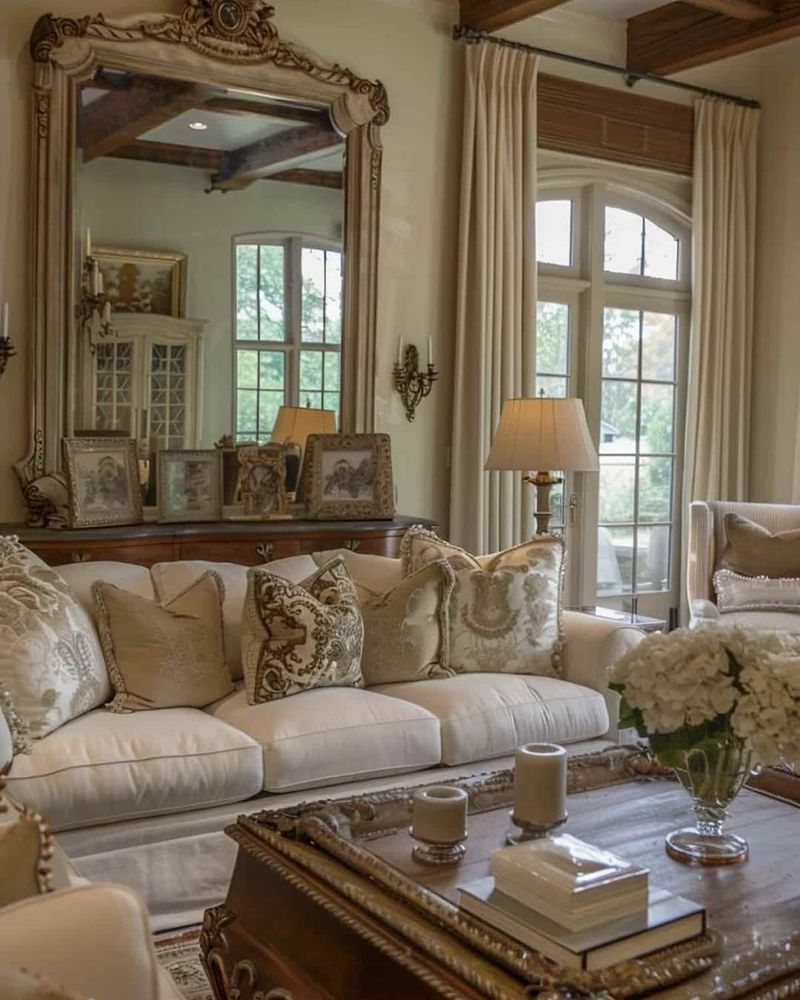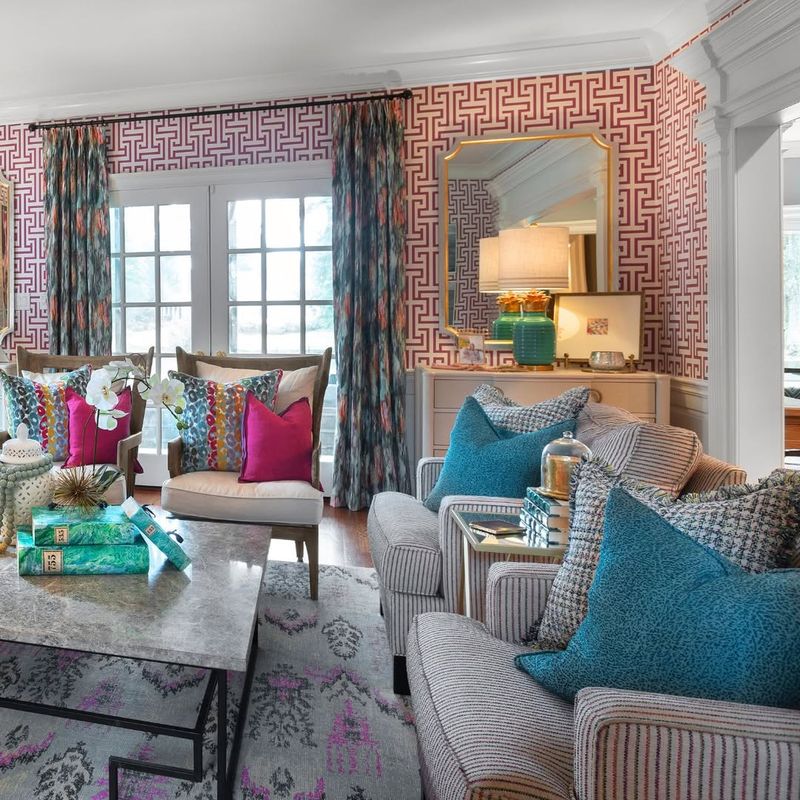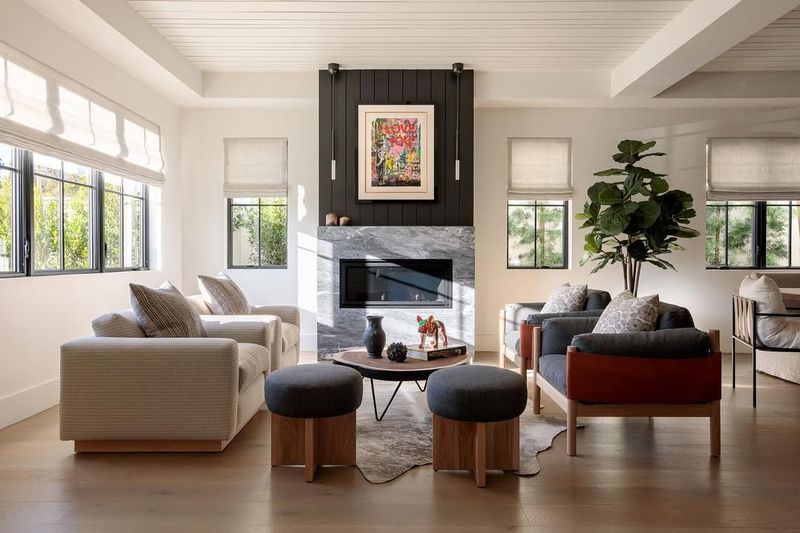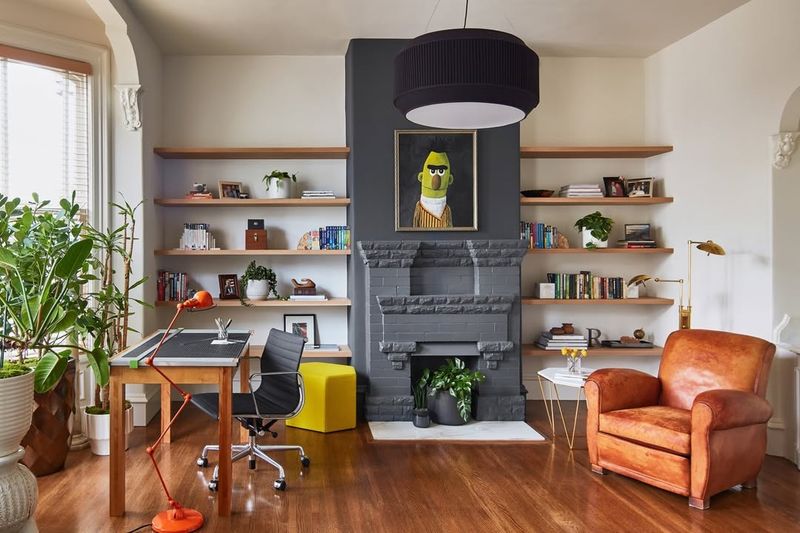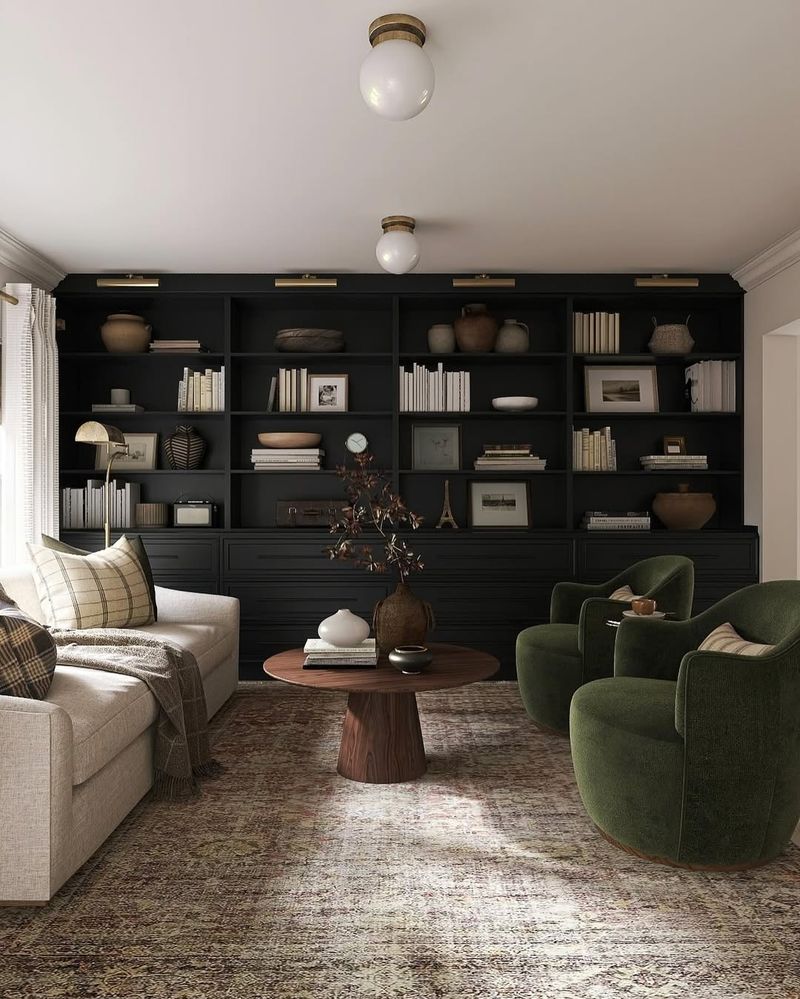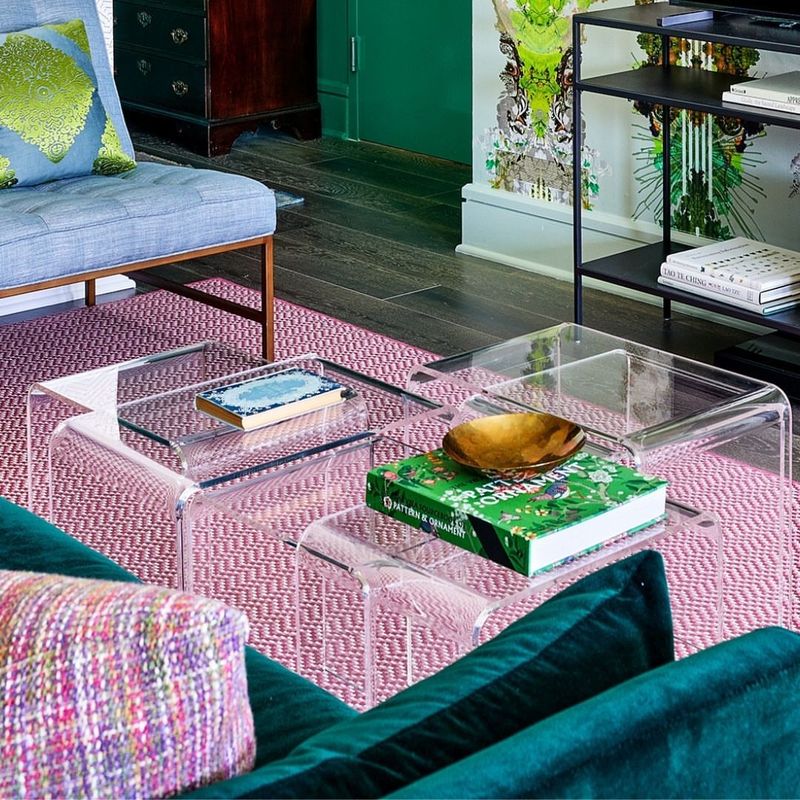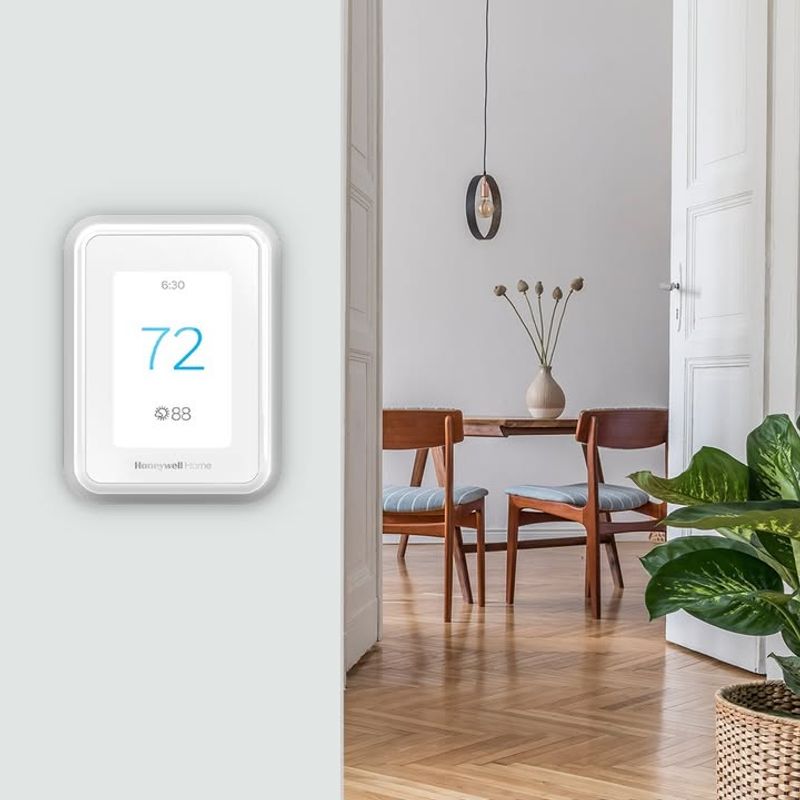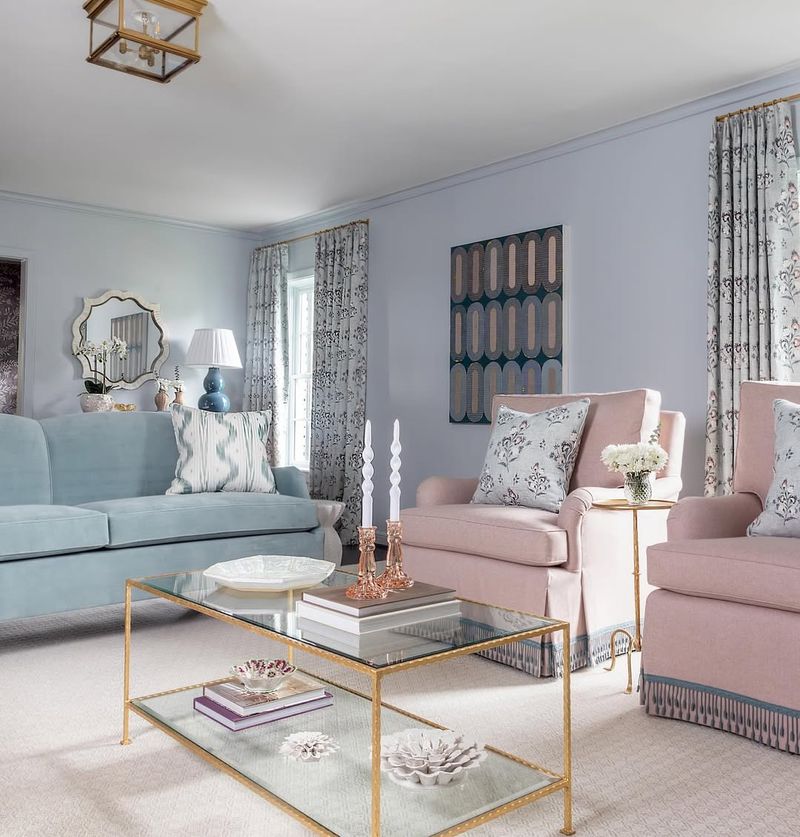Decorating an open concept space can be both thrilling and daunting. The vastness offers endless possibilities, yet the lack of walls poses unique challenges.
Join me on a journey through the top pitfalls homeowners face in this realm, ensuring your space is both functional and aesthetically pleasing.
1. Falling into the ‘Too Open’ Trap
When you first face the expanse of an open concept space, it’s tempting to embrace minimalism. However, too little can backfire. Without enough furniture, the area can feel cold and uninviting. Creating distinct zones with rugs or strategically placed furniture adds warmth and purpose.
Trust me, balance is key! Conversely, too many pieces crowd the space, making it feel cluttered. Hence, choose functional items that complement each other, maintaining flow while adding character. Moderation, my friend, is your secret weapon in achieving harmony.
2. Neglecting Ceiling Opportunities
Look up, my dear decorator! The ceiling is often the most neglected canvas in an open space. High ceilings beg for attention. Consider using dynamic lighting fixtures or exposed beams to draw eyes upward. This not only adds dimension but also character.
While flooring and walls steal the spotlight, ceilings deserve love. Decor elements here can elevate the entire ambiance. So, don’t shy away from experimenting. Use this often-overlooked plane to make a bold, stylish statement. Trust me, your guests will look up and marvel!
3. Overlooking Lighting Needs
Lighting, my friend, is the unsung hero of design. An open concept needs layers of light to adapt to various moods and functions. Relying solely on overhead lighting casts harsh shadows and misses opportunities for ambiance.
Integrate a mix of floor lamps, pendant lights, and sconces to create interest. Different zones can benefit from distinct lighting styles, enhancing functionality and coziness. Remember, the right lighting transforms a space from flat to fabulous. Don’t let your beautiful room drown in dullness. Brighten wisely!
4. Ignoring Acoustics
In the excitement of open living, sound can be overlooked. However, bare surfaces echo, creating an auditory chaos. Introducing textiles like curtains or plush rugs dampens noise, bringing peace. Acoustic panels, although often overlooked, can be a game-changer.
These subtleties enhance comfort without compromising style. Imagine enjoying a quiet evening without echoes disrupting your zen. Sound control equals serenity, a crucial aspect often missed. Addressing acoustics in your design makes your open space not just visually appealing but audibly soothing.
5. Forgetting to Define Zones
An open concept can become a maze without defined zones. Each area should serve a purpose, whether it’s for dining, relaxing, or working. Rugs, furniture arrangement, and decor help map out these zones. However, blending them seamlessly is crucial.
You want harmony, not a hodgepodge. Additionally, maintaining visual flow while defining spaces ensures clarity. Trust me, a well-zoned area enhances both function and aesthetic appeal. Your open space should tell a story, guiding guests effortlessly from one functional area to the next.
6. Overwhelming with Too Many Colors
Color, when misused, can overwhelm an open space. Too many hues create chaos rather than cohesion. Instead of a vibrant rainbow, opt for a cohesive palette. Neutral tones provide a base, with pops of color in decor or art to add interest.
Cohesion extends beyond walls to furniture and accessories, offering visual continuity. Remember, less is more when choosing a color scheme. This restraint creates calm yet invigorating environments. Your open space should feel inviting, not jarring. The right colors can be your best ally.
7. Neglecting Personal Touches
In striving for style, personal touches often get lost. Your space should reflect who you are. Incorporating family photos, heirlooms, or travel souvenirs brings warmth and personality. These elements tell your story, making a house a home. However, balance is essential.
Overdoing it can lead to clutter. Choose meaningful pieces that resonate with your style. Trust me, guests will appreciate and connect with the authenticity. Your open concept should be more than visually appealing; it should be a narrative of your journey and experiences.
8. Ignoring Traffic Flow
Navigating an open concept should feel natural and intuitive. Unfortunately, many forget that furniture placement can obstruct flow. Designing clear pathways ensures ease of movement. Additionally, consider how people enter and exit each zone. An obstructed path can frustrate and confuse.
Arranging furniture to complement natural traffic patterns creates a harmonious environment. Trust me, a well-thought-out flow invites guests to explore effortlessly. Your open space should welcome, not hinder. Ensuring fluidity in movement is an art, but once mastered, it transforms the experience.
9. Failing to Incorporate Storage Solutions
Storage, often an afterthought, is crucial in open spaces. Without it, clutter takes over, disrupting visual harmony. Thoughtfully integrated storage solutions, such as built-in shelves or stylish cabinets, maintain tidiness. Each zone can have dedicated storage, keeping essentials within reach.
This balance between functionality and aesthetics ensures a serene environment. Remember, clear surfaces promote tranquility, while clutter breeds chaos. Your open space should feel like a breath of fresh air, orderly and inviting. Trust me, mastering storage elevates both form and function.
10. Missing the Mark with Scale and Proportion
In an open concept, scale and proportion are vital. Tiny furniture in expansive areas feels lost, while oversized pieces overwhelm. Balance is key. Measure and plan to ensure furnishings fit the space appropriately. Additionally, mix sizes for visual interest, like pairing a large sofa with smaller accent chairs.
This creates harmony without monotony. Trust me, the right proportions elevate design, making the space feel cohesive and comfortable. Misjudging scale disrupts flow, but getting it right transforms chaos into beauty. Embrace balance for a stunning open space.
11. Overlooking the Power of Greenery
Plants breathe life into any space, especially open concepts. Their absence can make areas feel sterile. Introducing greenery like potted plants or hanging gardens adds vibrancy and texture. Moreover, plants improve air quality, enhancing well-being.
Choose varieties that complement your decor and are easy to maintain. Additionally, consider their placement to create natural flow and interest. Trust me, a touch of green transforms a room, offering both visual and health benefits. Your open space should feel alive and inviting, not barren and cold.
12. Underestimating the Impact of Texture
Texture, often undervalued, brings depth and warmth to an open concept. Without it, spaces feel flat and lifeless. Incorporate diverse textures through fabrics, rugs, and decor to enrich the environment. Mixing materials like wood, metal, and textiles creates interest.
Trust me, texture engages the senses, offering a tactile experience that enhances comfort. Your open space should feel cozy and dynamic, not sterile. Embrace the variety texture offers, transforming your area into a layered and inviting retreat. It’s the subtle details that make a difference.
13. Disregarding Window Treatments
Windows, the eyes of a room, deserve thoughtful consideration. Bare windows let in harsh light and compromise privacy. Elegant treatments like curtains or blinds can filter light and add style. Additionally, they frame views, enhancing the room’s aesthetic.
Consider fabric and color to complement your decor. Trust me, well-dressed windows not only offer functionality but also beauty. They should be an integral part of your design. Your open space requires balance between natural light and privacy, achievable with the right window dressing.
Don’t overlook this essential aspect.
14. Overcomplicating Your Design
Simplicity, my friend, is elegance. Overcomplicating design with too many elements leads to chaos. An open concept thrives on clean lines and thoughtful details. Instead of cramming every trend, focus on cohesion and harmony. Select a few standout pieces to highlight, allowing them room to shine.
Trust me, restraint is your ally. A well-curated space feels open and inviting, offering calm and clarity. Remember, less truly is more when it comes to effective design. Your open space should breathe, not suffocate under the weight of excess.
15. Forgetting Vertical Space Utilization
Vertical space, often neglected, is a goldmine in decorating. Tall walls beg for attention and creativity. Install shelves or hang art to draw eyes upward, enhancing dimension. Additionally, vertical gardens or tall plants can add interest.
Trust me, using vertical space wisely transforms your open concept, offering both storage and style. Don’t let these areas go to waste. They provide opportunities to showcase personality and elevate design. Your open space should feel expansive and thoughtfully filled, not just horizontally but vertically as well.
16. Failing to Layer Decor
Layering decor, much like dressing in layers, adds depth and richness to a space. Without it, rooms appear one-dimensional and dull. Introduce layers through varied textures, heights, and elements. Mix and match materials, colors, and styles to create a cohesive yet dynamic space.
Trust me, layers engage the eye, offering complexity and warmth. Your open concept should feel inviting and lived-in, not static. Embrace the art of layering to add intrigue and personality. It’s these layers that tell a story and create a welcoming atmosphere.
17. Misjudging Furniture Arrangement
Furniture arrangement in open concepts is an art. Misjudging placement disrupts flow and function. Consider the room’s purpose and arrange accordingly. Define zones with furniture, ensuring each serves a clear role. Additionally, create pathways for easy movement. Don’t be afraid to experiment with angles and groupings for interest.
Trust me, thoughtful arrangement elevates the space, offering both comfort and style. Your open concept should guide effortlessly, not confuse. Mastering furniture placement transforms the area, optimizing both aesthetics and utility.
18. Skipping on Rug Choices
Rugs, often underestimated, anchor and define spaces within an open concept. Skipping them makes areas feel ungrounded and cold. Choosing the right rug adds warmth, texture, and separation between zones. Additionally, they introduce color and pattern, enhancing visual interest.
Trust me, a well-chosen rug ties the room together, offering coziness and style. Your open space should feel connected and inviting. Without rugs, you miss an opportunity to add comfort and cohesion. It’s these details that transform a house into a home.
19. Neglecting Art and Decor
Art and decor breathe life into open spaces. They’re expressions of personality and style. Neglecting them leaves rooms feeling unfinished. Choose pieces that resonate, creating focal points and adding interest. Additionally, varying art sizes and styles introduces depth.
Trust me, decor reflects who you are, offering guests insights into your world. Your open concept should feel curated and thoughtful, not bare. Embrace art as a vital component of design, enhancing both beauty and warmth. It’s the personal touches that make a space truly yours.
20. Overlooking the Importance of Balance
Balance in design ensures harmony and flow. Overlooking it results in a lopsided space. Distribute elements evenly to avoid visual weight on one side. Consider symmetry, but don’t be rigid. Additionally, balance colors, textures, and heights for cohesion.
Trust me, achieving balance makes the space feel complete and comfortable. Your open concept should invite relaxation, not disrupt it. Mastering balance transforms chaos into calm. It’s an art worth perfecting, ensuring each element complements rather than competes. Create a space where every piece feels intentional.
21. Ignoring Seasonal Decor
Seasons change, and so should decor. Ignoring seasonal updates misses opportunities to refresh and enliven a space. Subtle changes like throw pillows, blankets, or centerpieces can reflect the time of year. Trust me, these adjustments keep your open concept dynamic and engaging.
Additionally, rotating decor prevents staleness, offering continued interest. Your space should evolve, capturing the essence of each season. Embrace change as a chance to explore new styles and themes. It keeps the environment fresh and inviting, ensuring it never feels stagnant.
22. Overusing Open Shelving
Open shelving offers accessibility and display opportunities, but overuse leads to clutter. Balance open shelves with closed storage to maintain order. Selectively display items, ensuring each piece contributes to the aesthetic. Additionally, vary heights and textures for interest. Trust me, restraint prevents overwhelming the senses.
Your open concept should feel clean and curated, not chaotic. Mastering the art of display transforms shelves into showcases, reflecting style and personality. It’s the thoughtful arrangement that elevates design, ensuring shelves enhance rather than hinder the space.
23. Neglecting Family Needs
Style shouldn’t trump practicality, especially for families. Neglecting functional needs leads to frustration. Consider multi-purpose furniture or durable materials to accommodate children and pets. Additionally, design with safety in mind, avoiding sharp edges or unstable decor.
Trust me, a family-friendly space doesn’t mean sacrificing style. It means balancing elegance with everyday life. Your open concept should welcome all members, offering comfort and functionality. Embrace design that adapts to your lifestyle, ensuring it serves your family’s unique needs. After all, home should be a haven for everyone.
24. Forgetting the Power of Mirrors
Mirrors, my friend, are magical. They reflect light and create an illusion of space. Forgetting them misses these benefits. Strategically place mirrors to enhance natural light and offer perspectives. Additionally, mirrors can be decorative, adding elegance.
Trust me, they’re versatile tools in design. Your open concept should feel bright and expansive. Mirrors transform small spaces into airy retreats, offering both beauty and function. Don’t overlook their potential. Embracing mirrors can refresh and revitalize your home, ensuring it feels open and welcoming.
25. Avoiding Bold Statements
Settling for safe choices results in bland spaces. Avoiding bold statements misses opportunities for impact. Introduce dramatic elements like vibrant art or unique furniture to catch the eye. Additionally, bold walls or statement lighting can elevate design. Trust me, these features create focal points and spark conversation.
Your open concept should express individuality, offering intrigue and excitement. Don’t shy away from daring choices. Bold statements transform ordinary into extraordinary, ensuring your space reflects personal flair. It’s these daring touches that make a memorable impression.
26. Overlooking Comfort
Style without comfort is incomplete. Overlooking comfort leads to spaces that lack warmth. Choose furnishings that invite relaxation, balancing design with coziness. Additionally, incorporate soft textiles like throws or cushions to enhance comfort. Trust me, a stylish space should also feel welcoming.
Your open concept should offer a retreat, combining elegance with ease. Don’t sacrifice comfort for looks. A well-designed space embraces you, offering both visual appeal and a sense of home. It’s this balance that transforms a room from merely beautiful to truly livable.
27. Neglecting Functionality
Functionality is as crucial as aesthetics. Neglecting it results in beautiful but impractical spaces. Consider how areas will be used, ensuring layouts support daily activities. Integrate versatile pieces that adapt to needs, like extendable tables or modular seating.
Trust me, a functional space enhances your lifestyle. Your open concept should facilitate ease and efficiency, offering more than just visual pleasure. Embrace design that serves purpose, ensuring every element has a role. It’s the thoughtful integration of form and function that creates a truly harmonious home.
28. Mismanaging Focal Points
Focal points guide the eye and anchor spaces. Mismanaging them creates confusion. Select one or two elements to highlight, like a fireplace or artwork. Additionally, align furniture to support these features, ensuring coherence. Trust me, clear focal points enhance flow and interest.
Your open concept should feel cohesive, offering direction. Avoid competing elements that distract. Instead, celebrate standout features, allowing them to shine. It’s the strategic emphasis on focal points that breathes life into a design, ensuring your space is both captivating and harmonious.
29. Avoiding Pattern Play
Patterns add vibrancy and movement. Avoiding them results in monotony. Introducing varied patterns through textiles, wallpapers, or decor creates dynamic spaces. Additionally, mixing patterns offers depth and personality. Trust me, they engage the eye, transforming your open concept into a lively environment.
Your space should feel energetic and inviting, not flat. Don’t fear experimenting with patterns. Embrace them as a design tool, ensuring they complement rather than clash. It’s the playful use of patterns that injects fun and flair, making your home distinctly yours.
30. Ignoring Smart Technology Integration
In our digital age, smart technology enhances living. Ignoring it overlooks convenience and efficiency. Integrate smart lighting, thermostats, or security for a seamless experience. Additionally, these features offer control and customization, adapting to lifestyle needs. Trust me, technology enriches life, making it easier and more enjoyable.
Your open concept should embrace innovation, offering both comfort and sophistication. Don’t resist the digital shift. Smart technology adds value and functionality, ensuring your home is future-ready. It’s the integration of tech that aligns with modern living, enhancing both form and function.
31. Overlooking the Need for Cohesiveness
Cohesiveness ensures unity and flow. Overlooking it results in discord. Consider a consistent theme or palette to tie elements together. Additionally, repeat colors, textures, or motifs for harmony. Trust me, cohesiveness creates a seamless experience, inviting relaxation.
Your open concept should feel complete and connected, not disjointed. Avoid mismatched styles that clash. Instead, embrace cohesion, allowing individual pieces to contribute to a unified whole. It’s the thoughtful blend of elements that transforms a space into a sanctuary, offering both beauty and balance.

